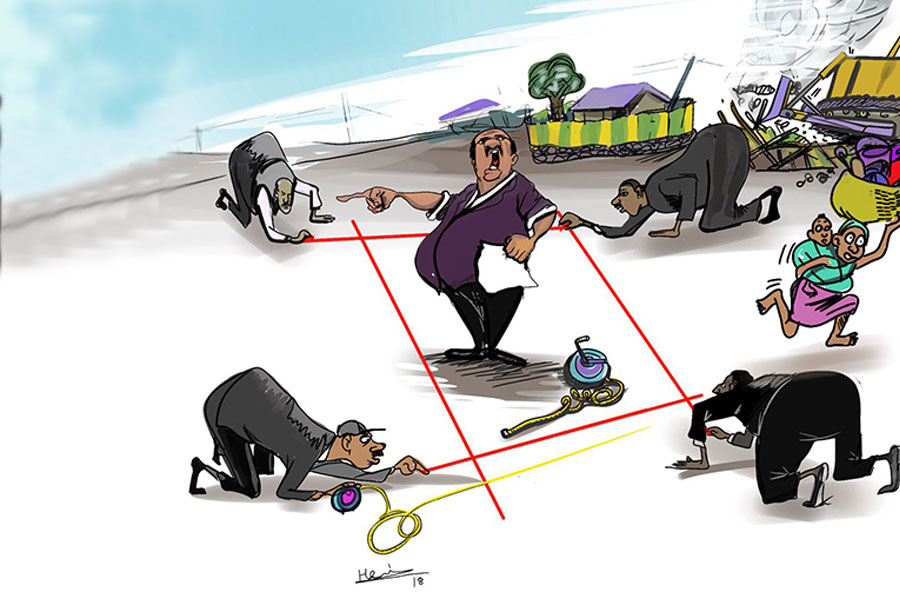
Life Matters | Nov 09,2019
Jun 1 , 2019
By
Periodically, residents of Addis Abeba hear of an old building earmarked for demolition. They do not take it pleasantly. For this is a country whose citizens have rarely accepted the legitimacy of a government, and Addis Abeba is a city whose residents have had qualms about successive incumbents. With this backdrop, such plans are understandably viewed as politically loaded.
It could be a hospital or a school that is about to be built, but few can swallow seeing their cultural heritage upended. This is unsurprising for these buildings of decades past come to represent much more than their physical structures. Historical buildings and statues are representative of what the city has been through and what it has aspired to become. The emotional connection this heritage has to residents is understandable.
The better argument by those that advocate the preservation of heritage sites in cities is perhaps the fact that city planners are usually bad at their jobs. Many a historical building has been bulldozed to make way for ugly buildings and poor infrastructure. The last couple of decades in Addis Abeba is a testament to the fact that demolitions of structures residents believed should be preserved have been followed by the menagerie of aluminum and steel buildings that neither have the aesthetics or the durability of what they replaced.
Most damningly, physical artifacts are not being removed for the sake of building a more livable and affordable city. Every year, Addis Abeba pushes out residents that cannot keep up with its increasing cost of living. Cars are taking most of the walking space, roundabouts get bigger and franchises and up-scale cafes, restaurants and hotels have made the city centres no-go zones for those with lower incomes.
In fact, modern Addis Abeba is a constant reminder why old buildings do not deserve all the adulation they get.
“Whether we look at political, economic or military capital, one thing is clear. Heritage is a top-down idea – it is defined and used by the most powerful members of society, rather than by society as a whole. Cultural heritage tells people – it does not ask them – what they should care about,” wrote Michael Press, scholar at the Borns Jewish Studies Program, in his article “Who really owns the past?” for Aeon.
Much like the rich and powerful own the present, so do they own the past. Cultural heritage is mostly the invention of the few elites over the backs of the masses. In a country like Ethiopia, like many of the investments in downtown Addis Abeba today, historical buildings are what former elites preferred to put their resources into.
How many of our intangible heritage sites are about giving, hard work, perseverance or knowledge accumulation? And how many concern themselves with weddings, births, funerals and worship?
They are mostly guidelines to how to celebrate parties.
And how many of our historical buildings started out as hospitals, schools or libraries?
Cultural heritage sites and buildings are not unimportant. They generate tourism revenue and, to a degree, are symbolic of peoples and history. They do have value.
But they should not be idolised. If we are progressive enough to acknowledge that cultures should transform, then such outlook should stand for the heritage handed out from generation to generation.
The political and social constructs that have given us our cultural heritage were not perfect. This does not mean everything that was built before should be demolished with impunity either. But this fact should figure into debates. Aside from their cultural value, their economic as well as their historic significance should be considered.
The rock hewn churches of Lalibela or the Obelisk of Axum offer an insight into the rich history of peoples and times we barely understand. We should preserve them.
However, most heritage sites, tangible or not, we keep for their emotional value. Indeed, the historical buildings in Addis Abeba are more aesthetic than most buildings being constructed now. It is a completely fine instinct to preserve the old ones.
But if these stand in the way of building a more liveable city or country - and there are no alternatives left unexplored, which is not the case now - demolish away.
PUBLISHED ON
Jun 01,2019 [ VOL
20 , NO
996]

Life Matters | Nov 09,2019

Films Review | Feb 23,2019

Covid-19 | Mar 14,2020

Radar | May 29,2021

Sunday with Eden | Aug 22,2020

Verbatim | Apr 04,2020

Editorial | Jun 05,2021

Commentaries | Oct 09,2021

Covid-19 | May 31,2020

My Opinion | Jan 12,2019

Photo Gallery | 174256 Views | May 06,2019

Photo Gallery | 164480 Views | Apr 26,2019

Photo Gallery | 154637 Views | Oct 06,2021

My Opinion | 136659 Views | Aug 14,2021
Editorial | Oct 11,2025

Dec 22 , 2024 . By TIZITA SHEWAFERAW
Charged with transforming colossal state-owned enterprises into modern and competitiv...

Aug 18 , 2024 . By AKSAH ITALO
Although predictable Yonas Zerihun's job in the ride-hailing service is not immune to...

Jul 28 , 2024 . By TIZITA SHEWAFERAW
Unhabitual, perhaps too many, Samuel Gebreyohannes, 38, used to occasionally enjoy a couple of beers at breakfast. However, he recently swit...

Jul 13 , 2024 . By AKSAH ITALO
Investors who rely on tractors, trucks, and field vehicles for commuting, transporting commodities, and f...

Oct 11 , 2025
Ladislas Farago, a roving Associated Press (AP) correspondent, arrived in Ethiopia in...

Oct 4 , 2025
Eyob Tekalegn (PhD) had been in the Governor's chair for only weeks when, on Septembe...

Sep 27 , 2025
Four years into an experiment with “shock therapy” in education, the national moo...

Sep 20 , 2025
Getachew Reda's return to the national stage was always going to stir attention. Once...

Oct 12 , 2025
Tomato prices in Addis Abeba have surged to unprecedented levels, with retail stands charging between 85 Br and 140 Br a kilo, nearly triple...

Oct 12 , 2025 . By BEZAWIT HULUAGER
A sweeping change in the vehicle licensing system has tilted the scales in favour of electric vehicle (EV...

Oct 12 , 2025 . By NAHOM AYELE
A simmering dispute between the legal profession and the federal government is nearing a breaking point,...

Oct 12 , 2025 . By NAHOM AYELE
A violent storm that ripped through the flower belt of Bishoftu (Debreziet), 45Km east of the capital, in...